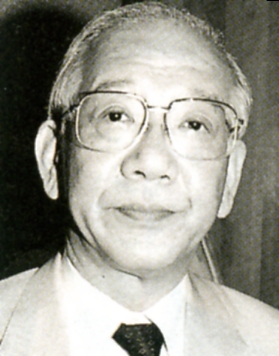- Jun Etō
Infobox Writer
name = Jun Etō

caption = Jun Etō
birthdate = birth date|1932|12|25|df=y
birthplace =Tokyo Japan
deathdate = death date and age|1999|7|21|1932|12|25|df=y
deathplace =Kamakura, Kanagawa Japan
occupation = Writer, Literary Critic
genre = Literary criticism
movement =
notableworks =
influences =
influenced =
footnotes =nihongo|Jun Etō|江藤淳|Etō Jun (
25 December 1932 –21 July 1999 ) was a Japaneseliterary critic , active in the Showa and earlyHeisei period Japan .Early life
Etō was born in the
Shinjuku district ofTokyo ; his father was a banker, and his grandfather (originally from Saga inKyūshū was anadmiral in theImperial Japanese Navy . His mother died when he was four years old, and always sickly as a child, he was mostly educated at home. He had an interest in literature from an early age, ranging from the heavy works ofJun'ichirō Tanizaki andFyodor Dostoevsky , to the comics ofSuihō Tagawa . In 1942, he was sent to boarding school in Kamakura,Kanagawa prefecture . While in Kamakura, his family's house in Tokyo was destroyed during the American air raids.In the immediate postwar era, he went to high school in Fujisawa,
Kanagawa prefecture , where he developed a friendship with future Tokyo governorShintaro Ishihara , who was one year ahead of him. He later returned to Tokyo, and eventually graduated fromKeio University with a degree inEnglish literature .Literary career
Although hired as a professor at the
Tokyo Institute of Technology , Etō devoted most of his time and efforts into literature, and published his first work, "Natsume Sōseki ron" (1955), a critique of the famous Japanese writerNatsume Sōseki . He followed this with "Dorei no shisō wo haisu" (1958) and "Sakka ha kōdō suru" (1959), in which he argued that a writer's style was directly related to his personal behavior and background.In 1962, he published "Kobayashi Hideo ronshū", in which he dared to write a critique on the famous
literary critic Kobayashi Hideo . Shortly afterwards, he departed for theUnited States for two years, for advanced studies atPrinceton University .Other works include "Ichizoku saikai" (1967-1972) in which he attempted to trace his family roots and at the same time, the roots of the
Japanese people .Etō was a very prolific author, and his books and essays ranged from
literary criticism and to postwarpolitical commentary ; through taking controversial viewpoints, he also established himself as one of foremost public intellectuals in the print and television. Etō especially drew controversy during the mid-1960s when he produced a series of essays after his return from Princeton, which indicated a shift thefar right end of the political spectrum.On
21 July 1999 , Etō committedsuicide at his home in Kamakura by cutting his left wrist. He had been depressed by the death of his wife the previous year, and by astroke which he had suffered, which made writing difficult.Published Works
* Tansman, Alan and Dennis Washburn. (1997). "Studies in Modern Japanese Literature: Essays and Translations in Honor of
Edwin McClellan ." Ann Arbor: Center for Japanese Studies, University of Michigan. ISBN 0-9395-1284-X (cloth)ee also
*
Japanese literature
*List of Japanese authors References
* Eto, Jun. "A Nation Reborn: A short history of postwar Japan". International Society for Educational Information (1974). ASIN: B0006D99OO
* Eto, Jun. "Natsume Sōseki ronshu". Kawade Shobo Shinsha. 10-ISBN 4-309-60931-7. ja icon
* Eto, Jun. "Kobayashi Hideo ronshu". Kawade Shobo Shinsha. 10-ISBN 4-309-60932-5 ja icon
* Fukuda, Kazuya. "Eto Jun to iu hito". Shinchosha (2000). 10-ISBN 4-103-90906-4
Wikimedia Foundation. 2010.
